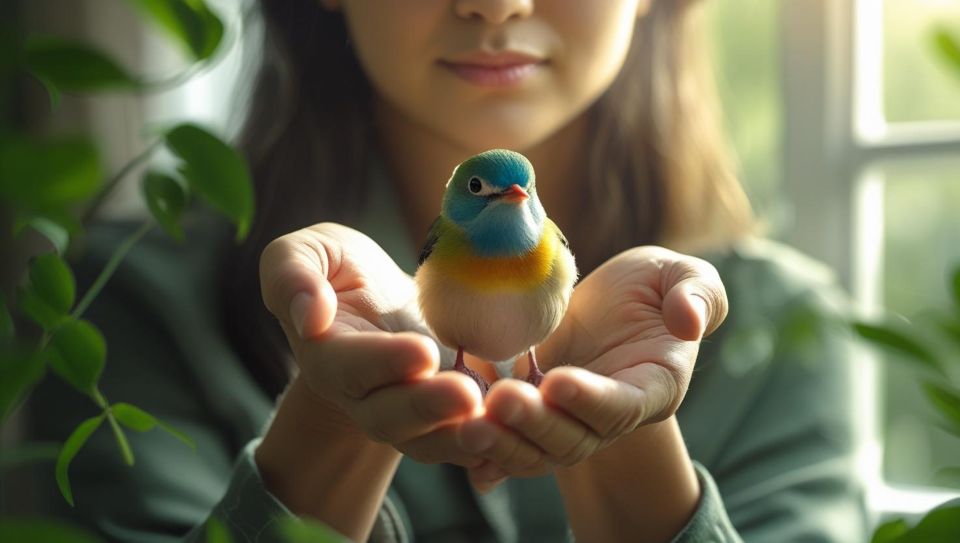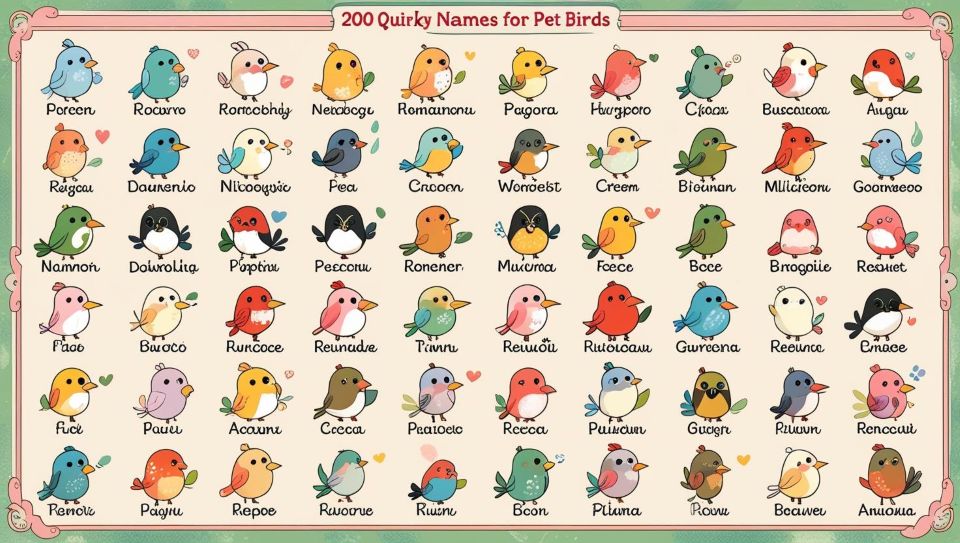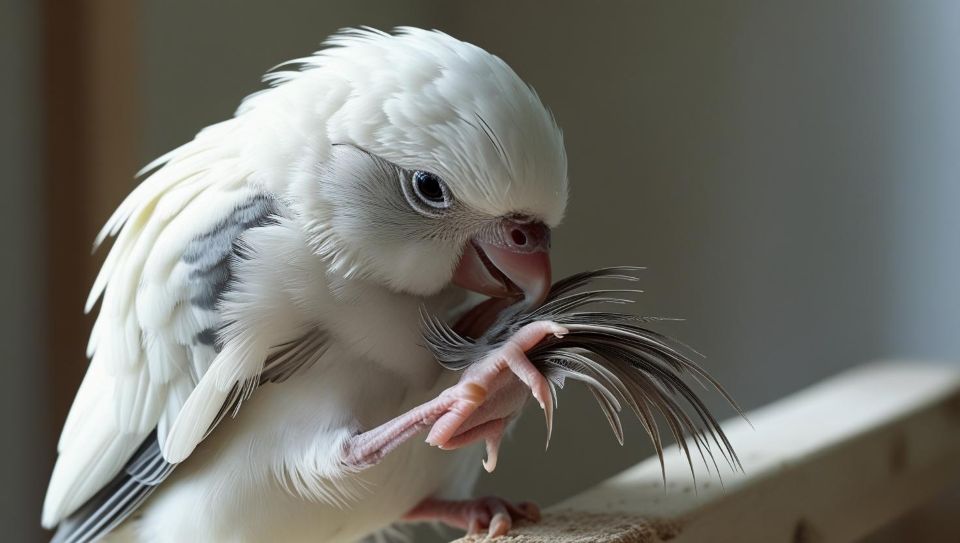Thinking about bringing a bird into your life? Those colorful feathers, cheerful chirps, and curious eyes make it easy to fall in love at first sight. But before you head to the pet store or hit that “adopt now” button, ask yourself—is a pet bird really the right fit for you?
Birds might seem low-maintenance at a glance, but in reality, they’re anything but. From specialized bird diets and social interaction to cage maintenance and long-term commitment, owning a bird requires time, effort, and a whole lot of patience. This guide will walk you through the most important things to know before getting a pet bird, helping you make an informed decision—not just for your sake, but for your future feathered friend’s happiness too.
Are you really ready to keep birds as pets?
Have you ever been drawn in by the vibrant feathers and curious eyes of birds at a street market? Their cheerful chirps and playful energy make them hard to resist—and sometimes, all it takes is one look to spark the urge to bring one home. That’s why impulse bird purchases are so common.
But reality doesn’t always match the fantasy. Not long after, many of these birds end up abandoned—left on the streets, posted in online forums, or surrendered to animal shelters. Some become weak from neglect; others lose their spirit due to isolation or poor conditions. In some cases, owners release them into the wild, where they’re unequipped to survive. It’s a heartbreaking outcome—for both the bird and the person who wasn’t fully prepared.
So, is keeping a bird really as simple as giving it food and a cage? Definitely not. Responsible bird ownership means making a long-term commitment. It takes time, patience, and money. You’ll need to learn about your bird’s behavior, diet, and habitat needs—and be ready to cover everything from toys and food to unexpected vet bills.
If you’re considering bringing a feathered companion into your life, it’s worth pausing to ask yourself:
- Do I have enough time to give a bird the daily attention and interaction it needs?
- Do I understand its species-specific behavior and care requirements?
- Can I afford ongoing costs like food, housing, and medical care?
- Am I okay with the noise, mess, and feather shedding that come with pet bird care?
- Most importantly—am I ready to commit for the bird’s entire lifetime?
These are the critical questions to ask before getting a pet bird. Because adopting a bird isn’t a casual hobby—it’s a long-term relationship built on love, consistency, and care.
In the sections ahead, we’ll explore the essential factors you need to consider before becoming a bird parent. Making informed choices now will lay the foundation for a rewarding, lasting bond—for both you and your future feathered friend.
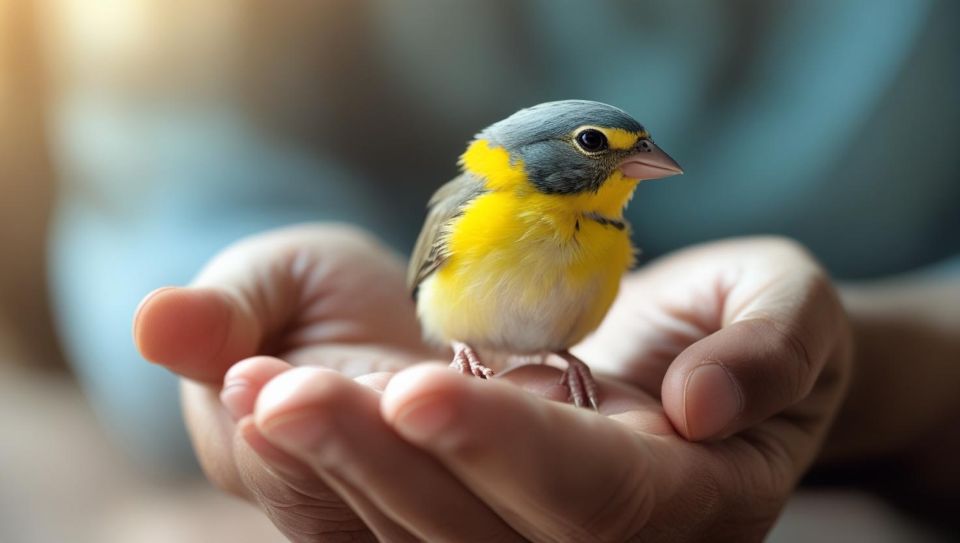
Is Keeping Birds Really That Easy?
Not quite. In fact, it’s more of a long-term commitment that requires daily effort and thoughtful care. From feeding and cleaning to companionship and mental stimulation, nearly every aspect of bird keeping puts your responsibility to the test.
Each morning, you might find yourself waking up early just to prep fresh food before work. Different species have different needs—small birds often do well on seed mixes and chopped produce, while parrots may require a more varied diet with nuts, protein, and specialized supplements. Hygiene is non-negotiable—food and water dishes should be cleaned daily to prevent harmful bacteria from building up.
Cage maintenance is just as important. A clean cage isn’t optional—it’s essential. That means removing droppings and leftover food daily, and doing a full disinfecting routine weekly: wiping perches, scrubbing dishes, and cleaning toys. Neglect this for a few days, and you’ll notice odors—and worse, your bird could get sick.
But caring for birds goes beyond “feed and clean.” Do birds need daily attention? Absolutely. Species like budgies, cockatiels, and lovebirds are intelligent, emotional, and deeply social. They need 30 minutes to 2 hours of interaction each day—whether it’s chatting, training, or safe free-flight time outside the cage. Without that connection, birds may develop anxiety-driven behaviors like screaming, feather plucking, or even self-harm.
And here’s something many first-time owners miss: bird species care differences really matter.
- Canaries and finches are more independent—ideal for beginners with limited time.
- Budgies and cockatiels crave interaction and do best with consistent engagement.
- Macaws, African Greys, and Amazons demand several hours of stimulation, flying space, and emotional bonding—every single day.
So, how much time do pet birds need? More than most people realize. If you work long hours, travel often, or have a packed social life, you’ll need a reliable plan to ensure your bird still gets proper care—even when you’re unavailable.
Birds aren’t decorative—they’re sentient, emotionally complex companions. So before you say, “I want a bird,” ask yourself honestly:
Do I really have the time to show up—fully—for this bird, every single day?
Want to Keep a Bird? Here’s What It Really Costs
Thinking about getting a pet bird? Don’t assume it’s just a one-time expense. Owning a bird is a long-term financial and emotional commitment. Before bringing home your feathered friend, it’s important to get a clear picture of the real costs involved. So… how much does it cost to keep a pet bird in the U.S.? Let’s break it down.
🐦 Bird Purchase Price
First things first—the cost of the bird itself. Prices vary greatly depending on the species, age, rarity, and where you buy (pet store, breeder, or rescue). Here’s a general overview of typical bird prices:
- Budgies (Parakeets): $20–$50
- Cockatiels: $50–$150
- Conures / Quakers / Lovebirds: $150–$400
- African Grey Parrots: $1,000–$3,500
- Macaws, Cockatoos, Amazons: $2,000–$10,000+
Rare or show-quality birds from reputable breeders can cost even more. So before falling in love with that striking exotic parrot, make sure your wallet is ready.
🏠 Bird Cage & Basic Setup
Your bird’s cage is its forever home—and this isn’t the place to cut corners. Bird cage prices depend on size, build quality, and features:
- Small cages (finches, parakeets): $30–$100
- Medium cages (cockatiels, conures): $100–$400
- Large cages (macaws, African Greys): $500–$2,000+
- Custom or luxury cages can exceed that range
And don’t forget essential accessories: food and water bowls, perches, cage liners, and sand. Expect to spend an additional $50–$150 on the initial setup alone.
🥗 Monthly Food & Supply Costs
When it comes to monthly bird care expenses, food is one of the biggest recurring costs:
- Seed-eating birds (canaries, finches): $10–$30/month
- Parrots (cockatiels, conures, macaws): $30–$100/month (including pellets, nuts, fruits, and vegetables)
- Bird treats, cuttlebones, calcium blocks: $5–$10/month
- Bird-safe cleaning supplies: $5–$10/month
Also factor in mental enrichment. Birds, especially parrots, need toys to stay stimulated. Expect to spend another $10–$30/month on bird toys, which should be rotated regularly to prevent boredom.
🩺 Veterinary & Health Costs
Even if your bird looks healthy, annual avian vet checkups are essential—and the costs can add up fast:
- Routine vet exam: $75–$200
- Bloodwork or diagnostic tests: $50–$150
- Emergency treatment or illness: $200–$1,500+ (depending on condition)
Common issues like respiratory infections, feather plucking, or digestive problems can require urgent—and expensive—care. Most experienced owners recommend setting aside $300–$500/year as a bird health emergency fund, just in case.
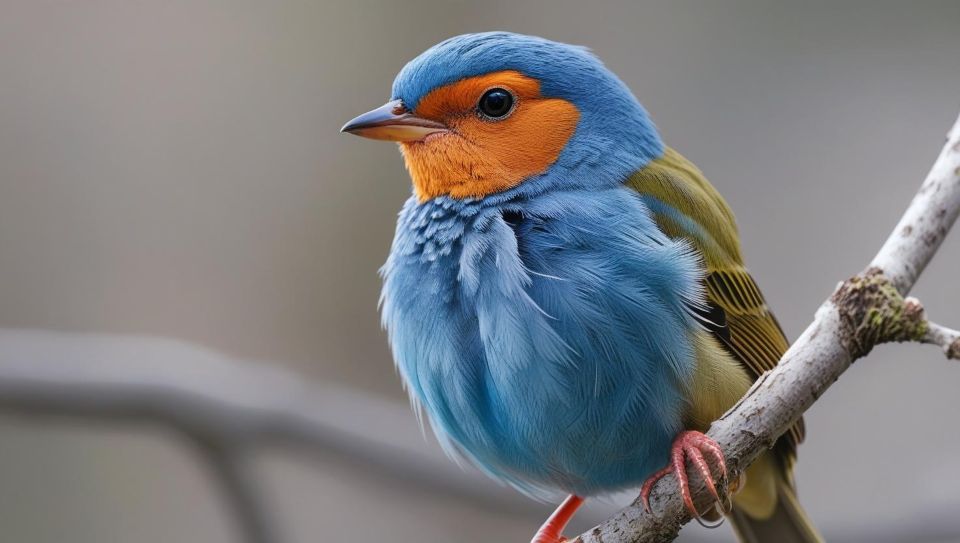
Choosing a bird species: Finding the perfect fit
The bird world is colorful, and each bird species has its own unique charm. Choosing the right species is the first step to an enjoyable and sustainable bird keeping journey. So, what’s the best pet bird for you? Take a look at several popular bird species for first-time owners to advanced bird lovers.
Budgies (Parakeets) are often considered the best pet birds for beginners—and for good reason. These tiny charmers are only about 7–8 inches (18–20 cm) long and have a plump, adorable look that’s hard to resist. They’re also very budget-friendly, typically priced at $25–$60 USD depending on color and source. Budgies are social, outgoing, and adapt well to new environments. Plus, they’re super interactive and love human attention. They’re also easy to care for—just provide a quality seed mix and the occasional cuttlebone for calcium. That said, they’re very social animals, so it’s best to keep them in pairs. A solo budgie can get lonely and even depressed. (budgie care)
Another top favorite is the Cockatiel. Slightly larger at around 12–13 inches (30–34 cm), cockatiels are gentle, affectionate, and make excellent family pets. Prices range from $100–$300 USD, with specialty mutations like pearl or pied fetching higher prices. One of their cutest features is the crest on their head, which acts like a little mood indicator—it perks up when they’re excited and flattens when they’re scared or stressed. While females are quieter, male cockatiels can learn to whistle tunes and even mimic simple words. Cockatiels are social but shy, and they prefer calm, quiet households. Daily seed mix is fine, but don’t forget that twice a week calcium boost with a cuttlebone. (cockatiel personality)
If you’re moving into more advanced bird ownership, it’s hard to overlook the majestic Macaw. These giants can reach 32–40 inches (80–100 cm) in length and come in stunning colors—blue and gold, green-winged, scarlet—you name it. Their beauty is breathtaking, but so is the price: a typical macaw will cost you $3,000–$10,000+ USD, with rare species going even higher. Macaws are brilliant—comparable in intelligence to a 5-year-old child—and can learn complex commands. They also live a long time—50 to 70 years—so choosing a macaw means you’re making a lifelong commitment. But they’re not easy to keep. They require a custom aviary of at least 100 cubic feet (around 3 cubic meters), a rich and varied diet costing over $100/month, and regular beak maintenance to prevent overgrowth. (macaw price)
Then there’s the impressive African Grey Parrot, often praised for being one of the most intelligent bird species. They can develop a vocabulary of 1,000+ words, and even grasp basic math concepts. These birds typically cost $2,000–$5,000 USD, with two main types: Congo and Timneh. But they’re not for casual owners. African greys require a highly stable environment with humidity kept between 50–70%, and they need at least 3 hours of interaction daily. Without this, they may develop feather mites or even engage in self-destructive behavior like feather plucking. (African grey parrot intelligence)
Living environment for pet birds: creating a warm home
Don’t assume birds can adapt to just any environment. In reality, they’re incredibly sensitive to their surroundings—space, temperature, noise, and light all directly impact their health and happiness. If you want your bird to thrive, creating a safe and comfortable environment is essential.
Let’s start with space. Choosing the right bird cage size is critical. For small birds like budgies (parakeets), aim for at least 12″ x 18″ x 18″ (30×45×45 cm). Cockatiels need more room—ideally 18″ x 24″ x 24″ (45×60×60 cm). For large parrots like macaws, you’ll need a walk-in aviary or custom cage of at least 100 cubic feet (3 cubic meters) so they can fly and move freely.
Perches matter too. It’s not enough to have just one. Birds need different perch sizes to keep their feet healthy and strong. Natural wood perches are best—they help with grip and prevent foot strain.
Temperature plays a big role as well. Most pet birds are comfortable between 65–78°F (18–26°C). In hot weather, make sure there’s fresh water and airflow—a fan in the room helps, but don’t aim it directly at the cage. In winter, avoid placing the cage near heaters, which can dry out the air and irritate their breathing. If needed, use bird-safe heating pads or ceramic lamps, but install them safely to prevent burns.
Birds also have sharp hearing. Noise sensitivity in birds is real, and too much loud sound can cause stress, hormonal issues, or even behavioral problems. Keep their cage in a quiet area, away from TVs, loudspeakers, and HVAC units. If you have children, teach them to stay calm around the bird’s space.
Light exposure is another key factor. Birds need natural light to produce vitamin D3, which supports calcium absorption and bone health. Let them enjoy 1–2 hours of sunlight daily, but avoid direct midday sun. In darker months, use full-spectrum lighting to mimic daylight and support their natural rhythms.
Finally, consider the overall setup. Avoid placing cages in kitchens or bathrooms, where fumes and bacteria can build up. Keep cages away from open windows, and remove anything dangerous nearby—cleaning chemicals, exposed cords, or insecticides. Birds are curious, and even a quick peck at the wrong thing can be deadly.
At the end of the day, creating a safe bird environment is one of the most important responsibilities of a bird owner. Your feathered friend isn’t just a decoration—it’s a cherished member of your family.

Bird cages and supplies: details determine quality
The birdcage is your bird’s entire world—its bedroom, dining room, and playground all rolled into one. And the accessories you choose? They’re just as important. From perches to water bowls, every detail matters when it comes to creating a healthy, comfortable environment. In short, building the best bird habitat starts with smart, thoughtful choices.
Let’s talk cage size. Your bird needs space to move, stretch, and stay active. For small birds like budgies, go for at least 12″ x 18″ x 18″ (30×45×45 cm). Cockatiels need more room—about 18″ x 24″ x 24″ (45×60×60 cm). Large parrots like macaws require a custom aviary of at least 100 cubic feet (approx. 3 m³) to truly thrive.
Cage material is just as important. Metal cages—especially powder-coated or stainless steel—are strong, breathable, and safe. Cheaper metals can rust. Wooden cages look nice but are hard to clean and may attract moisture and bacteria. Plastic cages are lightweight and affordable, but lower-quality ones can release toxins. For most bird owners, a stainless steel bird cage is the safest and most durable option.
Pay attention to cage design too. The bar spacing should suit your bird’s size to prevent injuries or escape. A removable tray at the bottom makes daily cleaning much easier. Doors should open smoothly for safe access during feeding and maintenance.
Next, stock up on essential bird accessories. Choose ceramic or stainless steel food and water bowls—they’re easy to clean and free from harmful chemicals. For bird perches, offer a mix of widths and textures that match your bird’s foot size. Natural wood branches are ideal—they help trim nails and prevent foot strain.
And don’t forget toys! Birds need stimulation, both mental and physical. Provide safe bird toys like untreated wood blocks, cardboard for chewing, foraging toys for enrichment, and hanging items like bells or swings for play. Always choose non-toxic materials and check toys regularly for wear. Replace anything that’s damaged.
In the end, creating a bird-friendly home isn’t about spending the most—it’s about making smart, safe, and species-appropriate choices. Your bird’s happiness depends on it.
Diet and nutrition: customized recipes
Your bird’s diet has a direct impact on its energy, mood, and lifespan. That’s why creating a balanced, species-appropriate meal plan is one of the most important parts of responsible bird care.
Mix It Up: Variety Is Key
While seeds are a staple in many birds’ diets—parrots love sunflower seeds and millet, while finches go for smaller grains like canary seed—a seed-only diet isn’t enough. It can lead to nutritional deficiencies and too much fat.
Fresh vegetables should be a daily part of your bird’s meals. Leafy greens like spinach, plus carrots and bell peppers, are packed with essential vitamins and minerals. Just avoid harmful options like onions and garlic, which are toxic to birds.
Fruits also play a key role. Apples, bananas, and oranges offer vitamin C and antioxidants, but always remove pits and seeds first—apple seeds contain cyanide and should never be fed to birds.
Tailor to Your Bird’s Species
Different birds have different dietary needs, so always consider your bird’s species:
- Granivorous birds (e.g., canaries, finches) thrive on seeds and grains. They have cone-shaped beaks and strong gizzards built for cracking seeds.
- Insectivorous birds (e.g., chickadees, woodpeckers) eat mostly insects and berries. They lack a crop and need easily digestible foods.
- Omnivorous birds (e.g., mynahs, thrushes) eat a mix of grains, fruits, and insects. Their diet needs flexibility.
When planning meals:
- Small parrots (like budgies, lovebirds) do well with seeds, veggies, fruits, and high-quality pellets.
- Large parrots (like macaws, African greys) benefit from more fresh produce and a greater share of pelleted food.
- Finches and canaries mainly need seeds, with light servings of vegetables and fruit.
Feeding Schedule & Hydration
How often should you feed your bird? That depends on age and activity:
- Baby birds or those in breeding season may need food every 2–3 hours.
- Healthy adult birds usually eat once or twice a day, ideally in the morning and evening.
- For active birds, feel free to adjust accordingly.
And of course—never forget fresh, clean water. Hydration is especially important in warm weather or after playtime.
Healthcare: Protecting the Health of Your Pet Bird
Just like people, birds can get sick—and knowing how to spot early signs and when to call a vet is key to keeping your bird healthy.
Respiratory infections are one of the most common bird illnesses, especially when birds are exposed to drafts, cold temperatures, or high humidity. Watch out for sneezing, wheezing, labored breathing, or gasping noises. Left untreated, these symptoms can quickly become serious or even life-threatening.
Digestive issues like diarrhea, constipation, or a sudden loss of appetite are also common. These often result from bad food, spoiled seeds, or dirty water. Birds have sensitive systems—even a small change in water quality can upset their digestion.
Feather and skin problems are another red flag. Feather loss, mites, or fungal infections can cause itching, dull plumage, or constant scratching. If your bird’s feathers look ruffled or its skin seems irritated, don’t ignore it.
The best way to stay ahead of problems is through preventive bird care. Schedule a yearly bird vet checkup, and more often if your bird is older or has chronic issues. At home, stay alert for signs like changes in appetite, puffed-up feathers, odd droppings, or unusual behavior—these are often the first hints that something’s wrong.
Cleanliness is key to bird disease prevention. Clean cages daily, and sanitize food bowls, perches, and toys weekly with a bird-safe disinfectant. Always provide clean food and water, avoid sudden temperature changes, and keep the cage well-ventilated and dry. Never feed moldy or expired seeds—buy food from trusted sources only.
If your bird shows symptoms, don’t panic. Start by observing. For breathing issues, keep them warm with stable humidity—no cold drafts or dry air. Contact an avian vet quickly; they may prescribe antibiotics or supportive treatment.
For stomach troubles, pause solid food and offer soft, easy-to-digest alternatives like warm, soaked pellets or diluted formula. Electrolyte solutions can also help restore hydration. If symptoms don’t improve or get worse, seek emergency vet care.
Staying on top of avian health care with regular checks and daily attention gives your bird the best chance at a long, healthy, and happy life.
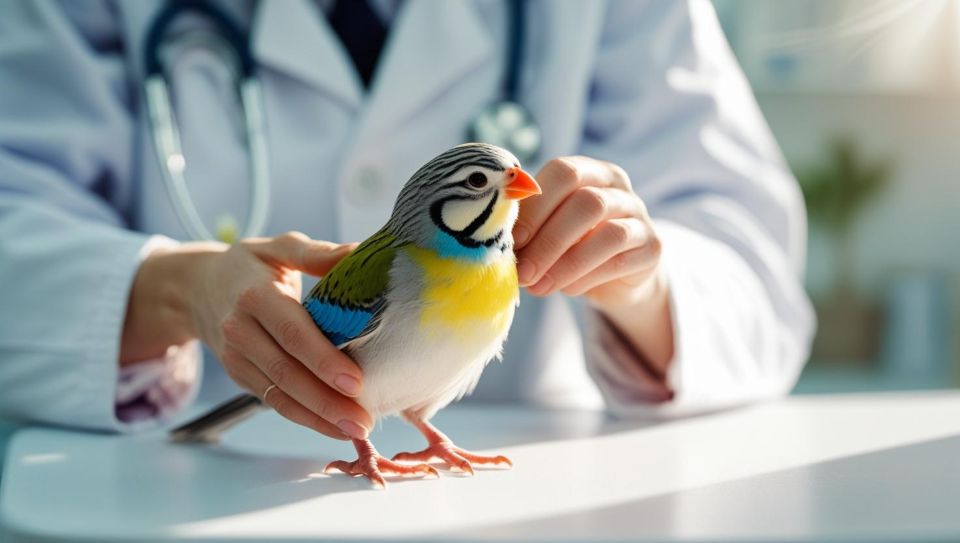
Final Thoughts:
Getting a pet bird isn’t just about picking the cutest one in the store—it’s about committing to responsibility, daily routines, and a long-term relationship that could last for many years, or even decades. From nutrition and grooming to emotional bonding and mental stimulation, birds require much more than just a cage and food. They’re intelligent, sensitive companions that thrive when given proper care and attention.
Before bringing one home, take a moment to truly consider: is a pet bird right for me? Think about your schedule, your budget, your space, and your willingness to commit long-term. Responsible bird ownership begins with honest questions—and being ready for real answers. If you feel prepared, then welcoming a bird into your life can bring unexpected joy, companionship, and a little music to your everyday routine.

